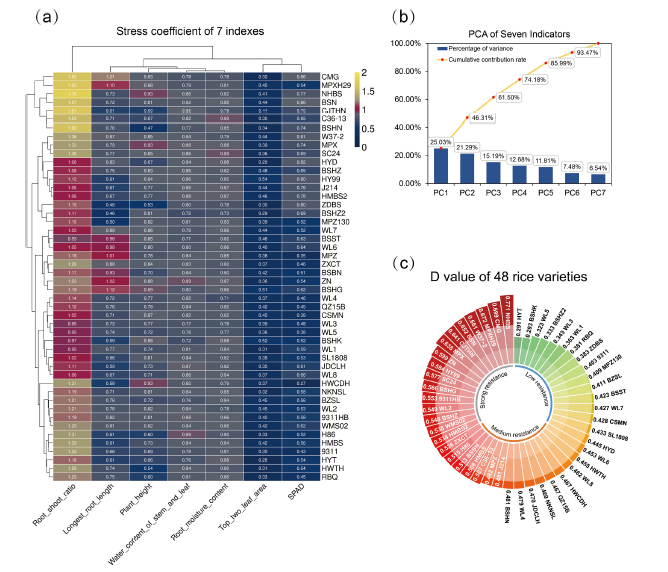Abstract:
Rice (Oryza sativa L.) is an important grain crop worldwide, and drought has become an important factor restricting rice yield. As a unique rice germplasm in Hainan (China), Shanlan upland rice has rich genetic diversity and certain advantage for breeding water-saving and drought-resistance rice. 48 varieties, including 41 Shanlan upland rice, 3 upland rice, and 4 irrigated rice varieties was cultivated in soil pots. The drought resistance was assessed at the seedling stage using the stress coefficients of seven indicators, as the D value calculating from five principal components to rank the varieties. Five cultivars with strong, medium, and low resistance, were selected for transcriptome sequencing. The results of the GSEA analysis showed that free amino acid content increased through the redistribution of energy in Shanlan upland rice to cope with drought stress. In addition, we found that Os03g0623100 was significantly up-regulated under drought stress conditions in varieties with high drought resistance, as compared with low resistance cultivars. The Os03g0623100 was predicted to interact with LEA protein in the STRING database, which may contribute to maintaining the energy metabolisms to under stress conditions. This study provides a view of Shanlan upland rice as a drought-resistant germplasm resource, and a deeper understanding of the molecular mechanism of crop drought resistance.
Key Words:
Shanlan upland riceDrought Germplasm resource



